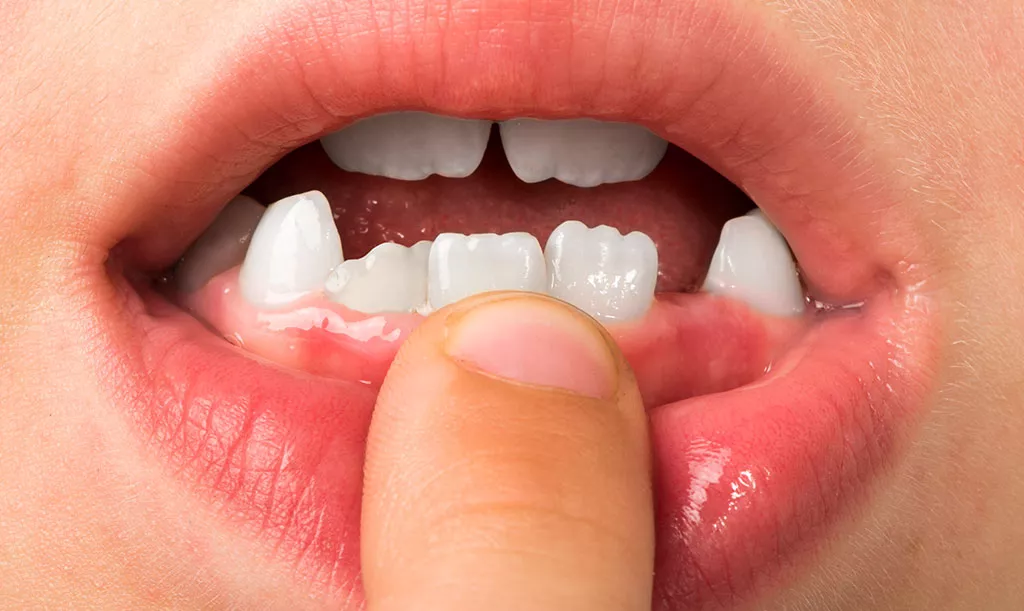Just like our skin, muscles, and bones, our teeth also show signs of aging over time. Many people assume that teeth only yellow or develop cavities, but structural wear, misalignment, jaw joint problems, and changes in facial contours are also key effects of aging.
In this article, we explore how teeth age and how Facelift Dentistry® can address both aesthetic and functional concerns.
🦷 How Do Teeth Change with Age?
As we age, teeth undergo changes that affect both function and appearance:
- Tooth length shortens
- Enamel erodes and color changes
- Gums begin to recede
- Jaw bone density decreases
After around age 40, these changes become more noticeable:
- Upper teeth become less visible, while lower teeth are more prominent
- A shadow sometimes called a “Chinese moustache” appears along the upper lip
- Cheeks may start to sag
- Lip support diminishes and mouth corners turn downward
- Nasolabial folds deepen
These effects can make the face look tired, hollow, and older than it actually is.
🏛 How Does the Skeletal System Change?
Shortened teeth reduce the lower facial height (vertical dimension), which leads to:
- Chin tip moving upward
- Lips appearing thin or sunken
- More pronounced nasolabial lines
- Sagging neck and weakened jawline
Thus, aging teeth can impact the entire facial structure, not just your smile.
📏 What is Vertical Dimension Enhancement?
Vertical dimension enhancement restores the lower facial height by rebuilding worn or shortened teeth. Benefits include:
- Aesthetic facial rejuvenation
- Improved chewing function
- Protection of jaw joint health
💎 What is Facelift Dentistry®?
Facelift Dentistry® is a modern approach that addresses dental aesthetics, occlusion, and facial form as a unified whole. The goal is not only to create beautiful teeth but to achieve a younger, healthier, and more balanced facial appearance—without surgical face-lifting procedures, relying entirely on dental restorations.
⚙️ Materials Used
Depending on the patient’s jaw structure, bite, and aesthetic goals, common materials include:
- Zirconia: durable with natural appearance
- E-max porcelain: highly aesthetic, especially for front teeth
- Composite resins: for temporary or short-term restorations
- Lithium disilicate ceramics: high aesthetics and strength
📸 Digital Planning with 3D Scanners
Modern 3D scanners allow:
- Precise measurement of tooth length and position
- Planning of a facially harmonious vertical dimension
- Visualization of the final outcome before treatment
This improves patient comfort and reduces errors in the lab.
😬 Teeth Grinding and Aging
Bruxism accelerates tooth wear, shortens teeth, and reduces vertical dimension, making the face appear older. Facelift Dentistry not only restores lost height but also stops further damage.
🕒 Treatment Duration
The process typically takes 2 weeks to 2 months, depending on gum health, existing teeth, missing teeth, or additional surgical needs. Treatment follows three stages:
- Digital measurements
- Temporary restorations to adjust to new height
- Permanent porcelain placement and final evaluation
🌟 Patient Benefits
- Younger, balanced facial appearance
- Ideal lower facial height
- Reduced jaw joint stress
- Symmetrical, aesthetic smile
- Relief from clenching-related pain
- Improved chewing function
⏳ Adaptation Period
It may take a few days to a week to adjust to the new vertical dimension. Temporary restorations help make this transition comfortable.
🛡 Preventive Care
To protect teeth and maintain results:
- Use a night guard
- Avoid hard foods
- Limit acidic drinks
- Keep up with regular check-ups
- Brush and floss daily
✨ Conclusion
Teeth influence not only our smile but the entire facial structure. Facelift Dentistry® offers a way to restore youthfulness, function, and harmony to the face. If you notice signs of aging—shortened teeth, visible lower teeth, “Chinese moustache,” or sunken cheeks—especially after 40, this method can be an effective solution.











